Answers
Chapter 1
Visualizing the Graph
Exercise Set 1.1
1. A: (−5, 4); B: (2, −2); C: (0, −5); D: (3, 5); E: (−5, −4); F: (3, 0)
-

-

7. (2008, 10), (2009, 15), (2010, 9), (2011, 9), (2012, 12), (2013, 5)
17. x-intercept: (−3, 0); y-intercept: (0, 5);

19. x-intercept: (2, 0); y-intercept: (0, 4);

21. x-intercept: (−4, 0); y-intercept: (0, 3);

-

-

-

-

-

-

-

-

-

71. (−12, 32), (72, 12), (52, 92), (−32, 112); no

-
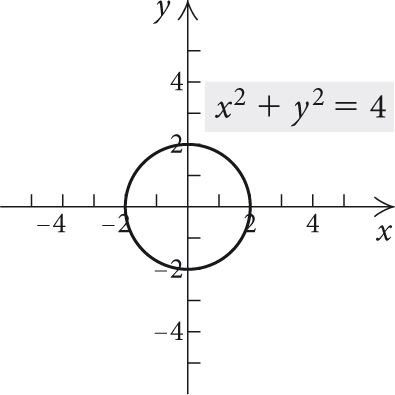
-

-

-

-
(0, −3);
5 ft
-
d(P1M)=√(x1+x22−x1)2+(y1+y22−y1)2=12√(x2−x1)2+(y2−y1)2;d(P2M)=√(x1+x22−x2)2+(y1+y22−y2)2=12√(x1−x2)2+(y1−y2)2=12√(x2−x1)2+(y2−y1)2=d(P1M)
Exercise Set 1.2
17. Not a function; domain: {−7, −2, 0}; range: {3, 1, 4, 7}
-
1;
6;
22;
3x2+2x+1;
3t2−4t+2
-
8;
−8;
−x3;
27y3;
8+12h+6h2+h3
-
18;
0;
does not exist;
8153, or approximately 1.5283;
x+h−4x+h+3
27. 0; does not exist; does not exist as a real number; 1√3, or √33
-

-

-

75. Domain: all real numbers, or (−∞, ∞); range: all real numbers, or (−∞, ∞)
79. Domain: all real numbers, or (−∞, ∞); range: all real numbers, or (−∞, ∞)
-
2018: $25.21; 2025: $28.23;
about 49 years after 1985, or in 2034
-

-

-

-

-

-
f(x)=−7;
f(x)=2x−1;
f(x)=7
Visualizing the Graph
Exercise Set 1.3
-
Yes;
yes;
yes
-
Yes;
no;
no
-

-

-

-

-
. For each mile per hour faster that the car travels, it takes ft longer to stop;
6 ft, 11.5 ft, 22.5 ft, 55.5 ft, 72 ft;
, or . If r is allowed to be 0, the function says that a stopped car has a reaction distance of ft.
Mid-Chapter Mixed Review: Chapter 1
Exercise Set 1.4
-
Using (1, 1.319) and (7, 2.749) gives us , where x is the number of years after 2006 and y is in billions;
2017: about 3.699 billion Internet users; 2020: about 4.413 billion Internet users
Exercise Set 1.5
-
(4, 0);
4
-
(−2, 0)
−2
-
(−4, 0);
−4
Exercise Set 1.6
Review Exercises: Chapter 1
9. x-intercept: (3, 0); y-intercept: (0, −2);

10. x-intercept: (2, 0); y-intercept: (0, 5);

-

-

-

16. Center: (−1, 3); radius: 3;

-
−3;
9;
-
0;
does not exist;
-
Yes;
no;
no, strictly speaking, but data might be modeled by a linear regression function.
-
Yes;
yes;
yes
-

-
[0, 5600]
-

-

-

-

-

-

Test: Chapter 1
[1.1] x-intercept: (−2, 0); y-intercept: (0, 5);

-
Yes;
-
8;
-
Does not exist;
0
-
No;
yes
-
-

-

-

Chapter 2
Exercise Set 2.1
-
(−5, 1);
(3, 5);
(1, 3)
-
(−3, −1), (3, 5);
(1, 3);
(−5, −3)
-
;
(−8, −6);
(−6, −3),
15. Relative maximum: 2.370 at ; relative minimum: 0 at ; increasing: ,; decreasing: (−0.667, 2)
-
, or ;
;
120 ft by 30 ft
-
, or ;
;
8 cm by 8 cm by 2 cm
-

-

-

-

-

-

-

-
-
or
63. Domain: [−5, 3]; range: (−3, 5);
-
38;
38;
;
-
22;
−22;
;
-
-
;
;
Exercise Set 2.2
-
Domain of f, g, , and ; domain of ; domain of ;
; ; ; ; ;
-
Domain of ; domain of ; domain of , and ; domain of ; domain of ; domain of ;
; ; ; ; ;
-
Domain of f, g, , fg, and ; domain of ; domain of ;
; ; ; ; ;
-
Domain of ; domain of ; domain of , and ; domain of ; domain of ;
; ; ; ; ;
-
Domain of f, g, , fg, and ; domain of ; domain of ;
; ; ; ; ;
-
Domain of f, g, , and ; domain of ; domain of ;
; ; ; ; ;
-
Domain of ; domain of ; domain of , and ; domain of ; domain of and ;
; ; ; ; ;
-
Domain of ; domain of ; domain of , and ; domain of ; domain of ;
; ; ; ; ;
-
Domain of ; domain of ; domain of , , and ; domain of ; domain of ; domain of ;
; ; ; ; ;
-

-

-
;
;
-

-

-

-

Exercise Set 2.3
-
;
;
; the function gives the area of the ripple in terms of time t.
63. Only makes sense. It represents the cost of the grass seed required to seed a lawn with area a.
Mid-Chapter Mixed Review: Chapter 2
-
(2, 4);
(−5, −3), (4, 5);
(−3, −1)
5. Relative maximum: 6.30 at ; relative minimum: −2.30 at ; increasing: ; decreasing: (−1.29, 1.29)
-

-
Domain of f, g, , , fg, and ; domain of ; domain of ;
; ; ; ; ;
-
Domain of ; domain of g, , , and ; domain of ; domain of ; domain of ;
; ; ; ; ;
24. The graph of will be the same as the graph of moved down b units.
25. Under the given conditions, and have different domains if for one or more real numbers x.
27. This approach is not valid. Consider Exercise 23 in Section 2.3, for example. Since , an examination of only this composed function would lead to the incorrect conclusion that the domain of is . However, we must also exclude from the domain of those values of x that are not in the domain of g. Thus the domain of is .
Exercise Set 2.4
-

-
;
Visualizing the Graph
Exercise Set 2.5
1. Start with the graph of . Shift it right 3 units.

3. Start with the graph of . Shift it down 3 units.

5. Start with the graph of . Reflect it across the x-axis.

7. Start with the graph of . Shift it up 4 units.

-

-

13. Start with the graph of . Shift it right 2 units. Then reflect it across the x-axis.

15. Start with the graph of . Shift it left 1 unit. Then shift it down 1 unit.

-

19. Start with the graph of . Shift it left 2 units.

21. Start with the graph of . Shift it down 2 units.

25. Start with the graph of . Stretch it vertically by multiplying each y-coordinate by 2.
33. Start with the graph of . Shift it left 3 units, then up 2 units.
-

-

-

-

-

-

-

-

Exercise Set 2.6
Review Exercises: Chapter 2
-
(−4, −2);
(2, 5);
(−2, 2)
-
;
(0, 2);
-
;
;
in., in.
-

-

-

-

-

-
Domain of ; domain of g: ; domain of , and ; domain of ;
; ; ;
-
Domain of , and ; domain of ;
; ; ;
-
; ;
domain of ; domain of
-
; ;
domain of and
-

-

-

-

75. Let and be odd functions. Then by definition, , or , and , or . Thus, and is odd.
76. Reflect the graph of across the x-axis and then across the y-axis.
-
.
adds 2 to each function value;
adds 2 to each input before finding a function value;
adds the output for 2 to the output for x
Test: Chapter 2
-
(−5, −2);
(2, 5);
(−2, 2)
-

-

Chapter 3
Exercise Set 3.1
Exercise Set 3.2
-
(−4, 0), (2, 0);
−4, 2
-
(−1, 0), (3, 0);
−1, 3
-
(−2, 0), (2, 0);
−2, 2
-
(1, 0);
1
-
2;
-
2;
Visualizing the Graph
Exercise Set 3.3
-
minimum:
-
(4, −4);
minimum: −4;

-
minimum:

-
(−2, 1);
minimum: 1;

-
(−4, −2);
minimum: −2;

-
minimum:

-
(−3, 12);
maximum: 12;

-
maximum:

-
(3, −4);
minimum: −4;
increasing: decreasing:
-
(−1, −18);
minimum: −18;
increasing: decreasing:
-
maximum:
increasing: decreasing:
-
(−1, 2);
minimum: 2;
increasing: decreasing:
-
maximum: 18;
increasing: decreasing:
-

-

-

Mid-Chapter Mixed Review: Chapter 3
-
-
29; two real;
-
0; one real;
-
−8; two nonreal;
-
(3, −2);
minimum: −2;
increasing: decreasing:

-
(−1, −3);
maximum: −3;
increasing: decreasing:

33. Completing the square was used in Section 3.2 to solve quadratic equations. It was used again in Section 3.3 to write quadratic functions in the form .
Exercise Set 3.4
Exercise Set 3.5
Review Exercises: Chapter 3
-

-

-

-

-
maximum:

-
(1, −2);
minimum: −2;

Test: Chapter 3
-

-

-

-

-
(1, 9);
;
maximum: 9;
;

Chapter 4
Exercise Set 4.1
Visualizing the Graph
Exercise Set 4.2
-
5;
5;
4
-
10;
10;
9
-
3;
3;
2
-

-

-

-

-

-

-

-

-

-

-

-

-

Exercise Set 4.3
-
No;
yes;
no
-
Yes;
no;
yes
-

-

-

-
;
;
yes; two examples are for any nonzero constant c; and ;
no
Mid-Chapter Mixed Review: Chapter 4
Exercise Set 4.4
-
Rational: −3; other: ;
-
Rational: ; other: ;
-
Rational: ; other: none;
-
Rational: ; other: ;
-
Rational: ; other: ;
, or
-
Rational: ; other: ;
-
Rational: 2; other: ;
-
Rational: −2; other: ;
-
Rational: ; other: ;
-

-

-
(4, −6);
;
minimum: −6 at
-
(1, −4);
;
minimum: −4 at
-
;
;
;
Visualizing the Graph
Exercise Set 4.5
33. Domain: ; no x-intercepts, no y-intercept;

35. Domain: ; no x-intercepts, no y-intercept;

37. Domain: ; x-intercepts: (1, 0) and (3, 0); y-intercept: (0, 3);

39. Domain: ; no x-intercepts, y-intercept: ;

41. Domain: ; x-intercept: , no y-intercept;

43. Domain: ; no x-intercepts, y-intercept: ;

45. Domain: ; no x-intercepts, no y-intercept;

47. Domain: ; no x-intercepts, y-intercept: ;

49. Domain: ; x-intercept: (1, 0), y-intercept: (0, −1);

51. Domain: ; no x-intercepts, y-intercept: ;

53. Domain: ; x-intercept: (−2, 0), y-intercept: (0, 2);

55. Domain: ; x-intercept: (1, 0), y-intercept: ;

57. Domain: ; x-intercept: (−3, 0), no y-intercept;

59. Domain: ; x-intercepts: (−3, 0) and (3, 0), y-intercept: (0, −9);

61. Domain: ; x-intercepts: (−2, 0) and (1, 0), y-intercept: (0, −2);

63. Domain: ; x-intercept: , y-intercept: (0, 2);

65. Domain: ; x-intercept: (1, 0), y-intercept: ;

67. Domain: ; x-intercept: , y-intercept: ;

69. Domain: ; x-intercept: (3, 0), y-intercept: (0, −3);

71. Domain: ; x-intercept: (−1, 0), no y-intercept;

73. Domain: ; x-intercepts: (−5, 0), (0, 0), and (3, 0), y-intercept: (0, 0);

75. Domain: ; x-intercept: (0, 0), y-intercept: (0, 0);

77. Domain: ; x-intercept: (0, 0), y-intercept: (0, 0);

-
as ;
The medication never completely disappears from the body; a trace amount remains.
-
;
as ;
In time, no one lives in this community.
-

Exercise Set 4.6
-
(10, 200);
-
;
maximum: when ;
-
(5, −23);
minimum: −23 when ;
Review Exercises: Chapter 4
and . Since and have opposite signs, has a zero between 1 and 2.
Domain: ; x-intercepts: and , y-intercept:

Domain: ; x-intercepts: none, y-intercept:

Domain: ; x-intercepts: (−3, 0) and (2, 0), y-intercept:

Domain: ; x-intercept: (2, 0), y-intercept:

as ;
The medication never completely disappears from the body; a trace amount remains.
A quadratic inequality , or , has a solution set that is a closed interval.
Test: Chapter 4
[4.1] , each has multiplicity 1; 3, multiplicity 2; −1, multiplicity 3
[4.1] 2008: 329,277 hybrid automobiles; 2011: 275,779 hybrid automobiles
-

-

[4.2] and . Since and have opposite signs, has a zero between 0 and 2.
-
Rational: −1; other:
-
Rational: , 1, 2, 3; other: none;
-
Rational: −4; other:
-
Rational: other: none;
[4.5] Domain: x-intercepts: none, y-intercept:

[4.5] Domain: x-intercept: (−3, 0), y-intercept:

Chapter 5
Exercise Set 5.1
-

-

-

17. Assume for any numbers a and b in the domain of f. Since and , we have
Thus, if , then and f is one-to-one.
19. Assume for any numbers a and b in the domain of f. Since and , we have
Thus, if , then and f is one-to-one.
-
One-to-one;
-
One-to-one;
-
One-to-one;
-
One-to-one;
-
One-to-one;
-
Not one-to-one;
does not have an inverse that is a function
-
One-to-one;
-
One-to-one;
-

-

-

79. domain of f and range of f and

-

-

85. domain of range of domain of range of

-
$38, $16.40, $11;
represents the number of players in the group lesson, where x is the cost per player, in dollars;
1 player, 4 players, 8 players
-
2010: $40.86 billion; 2013: $60.6 billion;
represents the number of years after 2008, where x is the e-commerce holiday season sales, in billions of dollars.
Exercise Set 5.2
-

-

-

-

-

-

-

-

27. Shift the graph of left 1 unit.

29. Shift the graph of down 3 units.

31. Shift the graph of left 1 unit, reflect it across the y-axis, and shift it up 2 units.

33. Reflect the graph of across the y-axis and then across the x-axis and then shift it up 4 units.

35. Shift the graph of right 1 unit.

37. Shift the graph of left 3 units and then down 5 units.

39. Shift the graph of right 1 unit, stretch it vertically, and shift it up 1 unit.

41. Shrink the graph of horizontally.

43. Reflect the graph of across the x-axis, shift it up 1 unit, and shrink it vertically.

45. Shift the graph of left 1 unit and then reflect it across the y-axis.

-

-

-
$82,000; $89,677.22; $102,561.54; $128,278.90
63. 1998: 322,420 vehicles; 2010: 938,297 vehicles; 2018: 1,912,580 vehicles
65. 2011: $234 million; 2015: $5844 million, or $5.844 billion
67. 2005: 3 million users; 2009: 17 million users; 2012: 54 million users
71. 1982: $48 billion; 1995: $109 billion; 2010: $284 billion
Visualizing the Graph
Exercise Set 5.3
-

-

-

-

-

-

83. Shift the graph of left 3 units. Domain: vertical asymptote:

85. Shift the graph of down 1 unit. Domain: vertical asymptote:

87. Stretch the graph of vertically. Domain: ; vertical asymptote: ;

89. Reflect the graph of across the x-axis and shift it up 2 units. Domain: vertical asymptote:

91. Shift the graph of right 1 unit, shrink it vertically, and shift it down 2 units.

-

-
2.5 ft/sec;
2.8 ft/sec;
2.0 ft/sec;
2.4 ft/sec;
2.2 ft/sec;
2.5 ft/sec;
2.3 ft/sec;
3.1 ft/sec
-
7.7;
9.5;
6.6;
7.6;
8.0;
7.9;
5.1;
9.3
-
-
140 decibels;
115 decibels;
40 decibels;
65 decibels;
120 decibels;
194 decibels
Mid-Chapter Mixed Review: Chapter 5
Exercise Set 5.4
Exercise Set 5.5
-
(0, −6);
minimum: −6 when
-
(3, 1);
maximum: 1 when
-
(−1, −5);
maximum: −5 when
-
(2, 4);
minimum: 4 when
Exercise Set 5.6
-
, where t is the number of years after 2012 and P is in millions;
7.0 million;
about 12.1 years after 2012;
about 32.4 years
-
0.90%;
1.63%;
20.9 years;
62.4 years;
0.18%;
29.9 years;
54.2 years;
0.46%;
2.64%;
177.7 years
-
$10,554.85; $11,140.48; $13,099.64; $17,160.07;
about 12.8 years
-
22.4% per minute;
3.1% per year;
60.3 days;
10.7 years;
2.4% per year;
1.0% per year;
0.0029% per year
-
2015: 49.4%; 2018: 48.4%;
in 2046
-
7.07 million barrels of oil per day;
12.9 years;
36.4 years after 1980
-
167;
500; 1758; 3007; 3449; 3495;
as the number approaches 3500 but never actually reaches it.
Review Exercises: Chapter 5
-
-
Yes;
-
Yes;
-
Yes;
,
-
Yes;
-
No
-
Yes;
21. domain of f and range of f and

22. domain of range of domain of range of

-

-

-

-

-

-

-
$30,000; $38,547.20; $49,529.56, $63,640.87
-
2.2 ft/sec;
8,553,143
-
, where t is the number of years after 1940 and S is in billions of dollars;
1970: $2.279 billion; 2000: $148.353 billion; 2015: $1197.023 billion, or about $1.197 trillion;
in 2019
-
, where t is the number of years after 2013 and P is in millions;
2017: 16.3 million; 2020: 17.1 million;
about 10 years after 2013;
41.5 years
Test: Chapter 5
-
Yes;
-
Yes;
-
Yes;
-
No
[5.1] domain of range of domain of range of

-

-

-

-

-
4.5%;
$1433.33;
15.4 years
Chapter 6
Exercise Set 6.1
Exercise Set 6.2
Exercise Set 6.3
Mid-Chapter Mixed Review: Chapter 6
47. Given points P and Q on the terminal side of an angle the reference triangles determined by them are similar. Thus corresponding sides are proportional and the trigonometric ratios are the same. See the specific example on p. 424.
48. If f and g are reciprocal functions, then If f and g are cofunctions, then
Exercise Set 6.4
Exercise Set 6.5
-
-
51. Even: cosine, secant; odd: sine, tangent, cosecant, cotangent
-

Stretch the graph of f vertically, then shift it down 3 units.
-

Shift the graph of f to the right 2 units.
-

Shift the graph of f to the right 4 units, shrink it vertically, then shift it up 1 unit.
-

Reflect the graph of f across the x-axis.
-

-

Visualizing the Graph
Exercise Set 6.6
ReviewExercises: Chapter 6
-

-


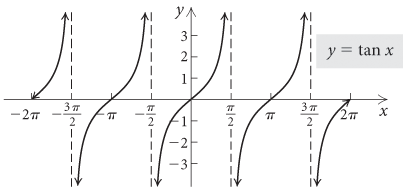



Function Domain Range Sine Cosine Tangent All real numbers except , where k is an integer Function I II III IV Sine Cosine Tangent 74. Amplitude: 1; period: phase shift:

75. Amplitude: period: phase shift:

-

-

-

93. The constants B, C, and D translate the graphs, and the constants A and B stretch or shrink the graphs. See the chart on p. 470 for a complete description of the effect of each constant.
Test: Chapter 6
Chapter 7
Exercise Set 7.1
Exercise Set 7.2
Exercise Set 7.3
-

-

-

-

-

-

-

-

-

-

-

-

-

-

-

31. Sine sum and difference identities:
Add the sum and difference identities:
Subtract the difference identity from the sum identity:
-

-

-

-

-
(a), (d)

(b) yes;
(c)
-
(a), (d)

(b) yes;
(c)
-
(a), (d)

(b) yes;
(c)
-

Mid-Chapter Mixed Review: Chapter 7
Exercise Set 7.4
Visualizing the Graph
Exercise Set 7.5
Review Exercises: Chapter 7
Test: Chapter 7
Chapter 8
Exercise Set 8.1
Exercise Set 8.2
Exercise Set 8.3
Mid-Chapter Mixed Review: Chapter 8
-
 ;
; -
 ; 1
; 1 -
 ; 4
; 4 -
 ;
; 32. Using the law of cosines, it is necessary to solve the quadratic equation:
The law of sines requires less complicated computations.
-
This equation has three distinct solutions because there are three distinct cube roots of 1.
This equation has four distinct solutions because 0 is one solution and the three distinct cube roots of 2 provide an additional three solutions.
This equation has six distinct solutions because 0 is one solution and the five fifth roots of 2 provide an additional five solutions.
Visualizing the Graph
Exercise Set 8.4
Exercise Set 8.5
Exercise Set 8.6
-

-
;
Review Exercises: Chapter 8
Test: Chapter 8
Chapter 9
Visualizing the Graph
Exercise Set 9.1
Exercise Set 9.2
17. Russian Federation: 80 medals; Ukraine: 25 medals; United States: 18 medals
19. In a restaurant: 78 meals; in a car: 34 meals; at home: 58 meals
21. Bacon: $142.4 million; Warhol: $105.4 million; Koons: $58.4 million
23. Dogs: 69.9 million; cats: 74.1 million; birds: 8.3 million
25. United States: $31.5 billion; Great Britain: $17.9 billion; Germany: $14.1 billion
27. servings of beef, 1 baked potato, serving of strawberries
-
2007: 33.625% 2014: 40.8%
-
333,000 deportations
Exercise Set 9.3
Exercise Set 9.4
-
the total amount of each type of produce ordered for both weeks
-
, ,
the total nutritional value of a meal of 1 serving of chicken, 1 cup of potato salad, and 3 broccoli spears
-
the total cost, in dollars, for each item for the day’s meals
-
the total cost, in dollars, of ingredients for each coffee shop
-
-
minimum:

-
minimum:

-
maximum:

-
maximum:

Mid-Chapter Mixed Review: Chapter 9
Exercise Set 9.5
Exercise Set 9.6
Exercise Set 9.7
-

-

-

-

-

-

-

-

-

-

-

-

-

-

-

-

-

-

-

-
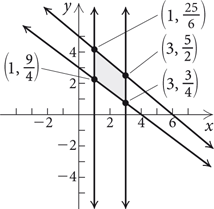
65. Maximum number of miles is 480 when the truck uses 9 gal and the moped uses 3 gal.
69. Minimum cost of $51 is achieved by using sacks of soybean meal and sacks of oats.
73. Minimum cost of $460 thousand is achieved using ’s and ’s.
77. Minimum weekly cost of $19.05 is achieved when 1.5 lb of meat and 3 lb of cheese are used.
79. Maximum total number of 800 is achieved when there are 550 of A and 250 of B.
-

-

-

91. Maximum income of $19,000 is achieved by making 95 chairs and 0 sofas.
Exercise Set 9.8
Review Exercises: Chapter 9
20. Consistent: 13, 14, 16, 17, 19; the others are inconsistent.
-
154 million persons employed
-
the total cost, in dollars, for each item for the day’s meals
-

-

-

59. Maximum score of 96 is achieved when 0 group A questions and 8 group B questions are answered.
-

-

71. In general, and . Since matrix multiplication is not commutative, , so .
73. If and are parallel lines, then , and , for some number k. Then , and .
Test: Chapter 9
[9.2] Hui: 120 orders; Ashlyn: 104 orders; Sheriann: 128 orders
-
;
;
;
the total cost, in dollars, for each type of menu item served on the given day
-

[9.7] Maximum profit of $750 is achieved when 25 pound cakes and 75 carrot cakes are prepared.
Chapter 10
Exercise Set 10.1
-

-

-

-

-

-

-

-

-

-
;
Exercise Set 10.2
Exercise Set 10.3
11. C: (0, 0); V: (2, 0), (−2, 0); ;

13. C: (2, −5); V: (−1, −5), (5, −5); ;

15. C: (−1, −3); V: (−1, −1), (−1, −5); ;

17. C: (0, 0); V: (−2, 0), (2, 0); ;

19. C: (0, 0); V: (0, −3), (0, 3); ;

-

-

-

-

29. C: (3, 1); V: (3, 3), (3, −1); ,

31. C: (1, −2); V: (2, −2), (0, −2); ;

33. C: (−3, 4); V: (−3, 10), (−3, −2); ;

-
Yes;
-
Yes;
-
Yes;
, or
-
Yes;
Visualizing the Graph
Exercise Set 10.4
Mid-Chapter Mixed Review: Chapter 10
Exercise Set 10.5
Exercise Set 10.6
-
Hyperbola;
horizontal, units below the pole;

-
Ellipse;
vertical, units to the left of the pole;

-
Hyperbola;
horizontal, units above the pole;

-
Ellipse;
vertical, 3 units to the right of the pole;

-
Parabola;
horizontal, units below the pole;

-
Ellipse;
vertical, 4 units to the left of the pole;

-
Hyperbola;
horizontal, units above the pole;

Exercise Set 10.7
Review Exercises: Chapter 10
45.
 Vertical directrix 2 units to the right of the pole; vertices:
Vertical directrix 2 units to the right of the pole; vertices: 46.
 Vertical directrix 4 units to the left of the pole; vertices:
Vertical directrix 4 units to the left of the pole; vertices: 70. See the development of the formula for the standard form of a parabola that follows Fig. 1 at the beginning of Section 10.1.
72. The procedure for rotation of axes would be done first when Then we would proceed as when
Test: Chapter 10
Chapter 11
Exercise Set 11.1
-
1062, 1127.84, 1197.77, 1272.03, 1350.90, 1434.65, 1523.60, 1618.07, 1718.39, 1824.93;
$3330.35
69. $9.80, $10.90, $12.00, $13.10, $14.20, $15.30, $16.40, $17.50, $18.60, $19.70
Exercise Set 11.2
Visualizing the Graph
Exercise Set 11.3
-
About 297 ft;
300 ft
-
; there exists a common ratio, ; thus the sequence is geometric.
-
;
or 5; 8, 12, 18, 27
Exercise Set 11.4
3. A polygon of 3 sides has diagonals. True; A polygon of 4 sides has diagonals.
True; A polygon of 5 sides has diagonals. True; A polygon of 6 sides has diagonals. True; A polygon of 7 sides has diagonals. True.
-
Basis step: true by substitution.
Induction step: Assume . Deduce . Starting with the left side of , we have
-
Basis step: true by substitution.
Induction step: Assume . Deduce . Starting with the left side of , we have
-
Basis step: true by substitution.
Induction step: Assume . Deduce . Starting with the left side of , we have
.
-
Basis step: Since is true.
Induction step: Assume . Deduce . Now
-
Basis step: Since is true.
Induction step: Let k be any natural number. Assume . Deduce .
Since , or .
Then . Multiplying by 2
Thus, , so .
-
Basis step: Since and is true.
Induction step: Assume . Deduce . Add on both sides of and simplify the right side. Only the right side is shown here.
-
Basis step: true by substitution.
Induction step: Assume . Deduce . Starting with the left side of , we have
-
Basis step: . True.
Induction step: Assume . Deduce .
-
Basis step: . True.
Induction step: Assume
Then
-
Basis step: Since is true.
Induction step: Assume . Deduce . Starting with the left side of , we have
.
-
Basis step:
is a factor of . True.
is a factor of . True.
Induction step: Assume is a factor of . Then for some polynomial .
Assume is a factor of . Then for some polynomial .
so is a factor of .
-
Basis step: is true by the properties of logarithms.
Induction step: Let k be a natural number . Assume . Deduce .
Mid-Chapter Mixed Review: Chapter 11
-
8;
, or
-
Basis step: . True
Induction step: Assume
Then
-
A formula for the first n natural numbers is .
Exercise Set 11.5
Exercise Set 11.6
-
;
;
-
Diagonals: The n line segments that form the sides of the n-gon are not diagonals. Thus the number of diagonals is
Let be the number of diagonals of an n-gon. Prove the result above for diagonals using mathematical induction.
Basis step: is true (a quadrilateral has 2 diagonals).
Induction step: Assume . Note that when an additional vertex is added to the k-gon, we gain k segments, 2 of which are sides of the -gon, and a former side becomes a diagonal. Thus the additional number of diagonals is , or . Then the new total of diagonals is , or
Exercise Set 11.7
-
Basis step: Since is true.
Induction step: Let be the statement of the binomial theorem with n replaced by k. Multiply both sides of by to obtain
This proves , assuming . Hence is true for .
Exercise Set 11.8
-
0.18, 0.24, 0.23, 0.23, 0.12;
Opinions may vary, but it seems that people tend not to pick the first or last numbers.
-
;
;
0;
1
-
;
;
;
-
HHH, HHT, HTH, HTT, THH, THT, TTH, TTT;
;
;
;
-
0.0475
-
, or 54,912;
Review Exercises: Chapter 11
-
$7.38;
$1365.10
-
Basis step: is true.
Induction step: Assume . Add on both sides.
-
Basis step: is true.
Induction step: Assume . Add on both sides.
-
Basis step: is true by substitution.
Induction step: Assume . Deduce . Starting with the left side of , we have
-
;
;
;
-
No (unless is all positive or all negative);
yes;
yes;
no (unless is constant);
no (unless is constant);
no (unless is constant)
62. Choosing k objects from a set of n objects is equivalent to not choosing the other objects.
Test: Chapter 11
-
Basis step: , so is true.
Induction step:
-
;
Just-In-Time
1. Real Numbers
2. Properties of Real Numbers
3. Absolute Value
4. Operations with Real Numbers
5. Order on the Number Line
6. Interval Notation
7. Integers as Exponents
8. Scientific Notation
9. Order of Operations
10. Introduction to Polynomials
11. Add and Subtract Polynomials
12. Multiply Polynomials
13. Factor Polynomials
14. Equation-Solving Principles
15. Inequality-Solving Principles
16. Principle of Zero Products
17. Principle of Square Roots
18. Simplify Rational Expressions
19. Multiply and Divide Rational Expressions
20. Add and Subtract Rational Expressions
21. Simplify Complex Rational Expressions
22. Simplify Radical Expressions
23. Rationalizing Denominators and Numerators
24. Rational Exponents
25. Pythagorean Theorem
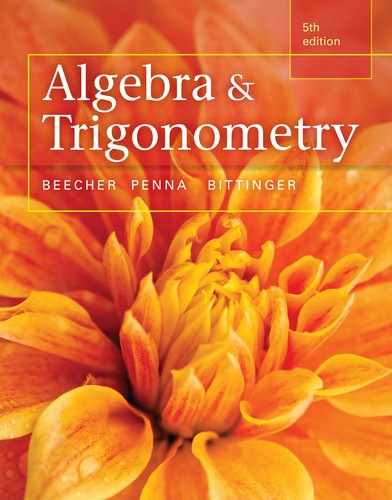










































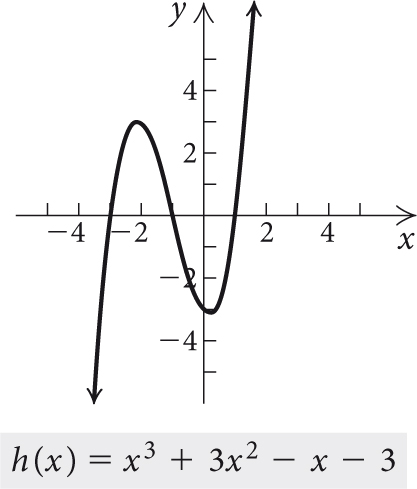



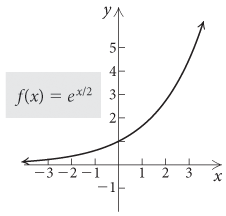





















































 For the quadrilateral ABCD, we have
For the quadrilateral ABCD, we have











































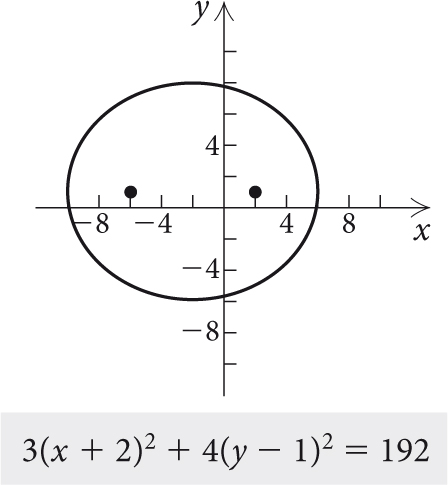









































 Horizontal directrix 2 units below the pole; vertex:
Horizontal directrix 2 units below the pole; vertex:  Horizontal directrix 3 units above the pole; vertices:
Horizontal directrix 3 units above the pole; vertices: 












 Horizontal directrix 2 units below the pole; vertex:
Horizontal directrix 2 units below the pole; vertex: 